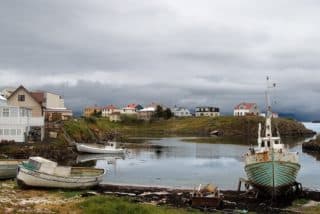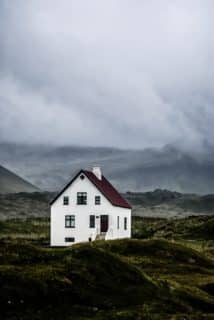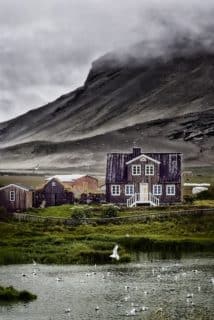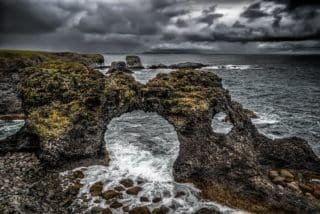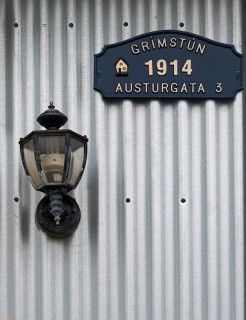The Snaefellssness Peninsula, about 100 kilometres north from Reykjavik, is overlooked by the Snaefells Volcano and its glacier. This is were Jules Verne’s ‘Journey to the Centre of the Earth’ started.
Descend, bold traveller, into the crater of the jökull of Snæfellsjökull, which the shadow of Scartaris touches before the Kalends of July, and you will attain the centre of the earth.
When our travel started, the calends of July were long over, and in any case there was no shadow to lead us as in Verne’s novel. The volcano was well hidden behind a thick layer of clouds and fog. We enjoyed a far better view from Reykjavik, while the sun was still high in the sky.

The Snaefells, it is said, is a world focus for cosmic energies, able to recharge the batteries of any stressed soul. Many come here just to restore their balance, and every year visitors meet for a summer night on the mountain top to enjoy the cosmic energy at its best. Maybe that day the the clouds were shielding the energies, because instead of regenerating, at the end of the day we were exhausted.
And from the Snaefells started also another journey. In 970, Erik the Red, a viking arrived from Norway because he had been declared an outlaw, suffered the same fate in Iceland. So he left, and since he couldn’t go back to the continent, he went west. People in Iceland knew already since a long time that there was a land beyond the sea. A Norwegian settler called Gunnbjörn, led by unexpected winds, saw a huge cliff before heading back to Iceland. Erik the Red reached Greenland and set there, and he was the one naming as it is still known today. But his journey continued along the western coast and took him to yet another land: the American continent.
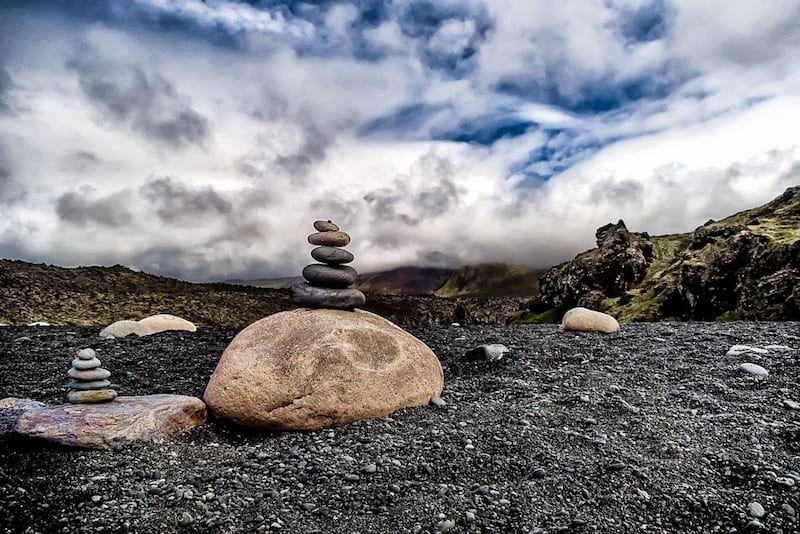
Does it mean the discovery of the New World started from these rocks? Well, they also say – not sure how much truth there is in it – that Christopher Columbus himself once spent some time in an old harbour called Ingjaldsholl. How the story goes, in 1477 a ship docked right where Erik the Red left many years ago. On this ship was the Genoese seaman, who stayed in Ingjaldsholl for almost one year, questioning every single sailor about the route towards west. So, either one way or the other, Snaefellsness is strictly linked with America’s discovery.
Today there is no harbour in Ingjaldsholl. And the sea, once teeming with fish, isn’t feeding the inhabitants anymore. Over the years the economy crumpled, the villages emptied and the farms were forsaken. Tourism is the peninsula’s main activity nowadays.

Djupalon is a beautiful beach with black pebbles and strangely shaped lava formations. A trail goes from the slope to the beach. The sea, often stormy, throws remainders of shipwrecks on the sand, rusty scrap twisted by the waves.
Stykkishólmur lies on the peninsula’s northern coast. It’s a fishermen village with a nice harbour, enclosed by a large island, Stykkið. Founded in 1550 for commercial purpose, it’s one of the few charming villages of this land, where often the practical features are preferred over the aesthetic ones: a bunch of wooden, coloured buildings grouped around the small harbour, and a welcoming restaurant. Over a hill and a horrible modern church, is a bay hosting the fishermen’s boats, with a few old houses still looking over it and a tiny graveyard where only three graves are to be seen.


